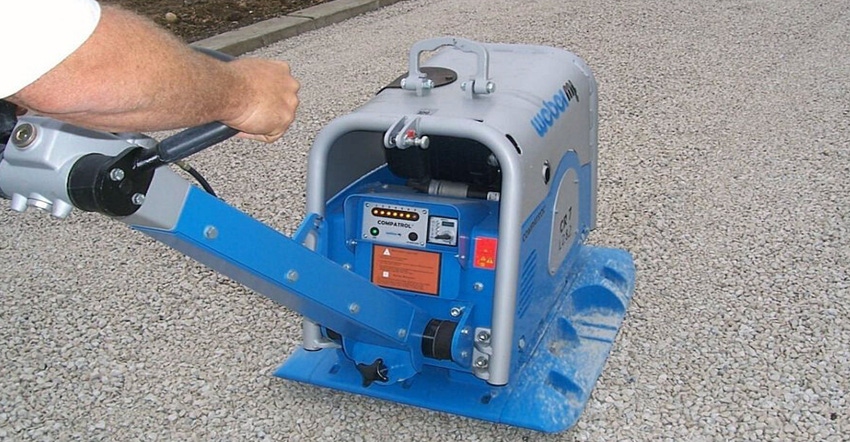Read about 12 crucial rules that can help cure your pavement problems and learn the nuances of the differences between compaction, consolidation and settlement in this blog post that highlights technical steps.

Engineers define soil as a naturally occurring, loose/uncemented/weakly cemented/relatively unconsolidated mineral particles, organic or inorganic in character, formed by weathering (disintegration) of rocks or other parent materials. This includes aggregate.
The terms compaction, consolidation and settlement are often used interchangeably. This usage is technically incorrect because they are fundamentally different processes.
Understanding key soil terms
Compaction is a rapid process where dynamic mechanical pressure from tamping, rolling and vibration is used to compress a soil mass for improved soil stability. Soil volume is reduced by removing air voids.
Consolidation is a slow process where a steady, sustained, static load compresses the soil mass. This can be a naturally occurring process or a soil improvement technique. Soil volume is reduced by squeezing pore water out of the soil mass.
Settlement is a long-term process where dynamic forces, like transient loads, seepage and freeze-thaw cycling act upon the soil mass. Settlement is a naturally occurring process. Soil volume is reduced by removing air voids and water from the soil.
12 Rules to Help Cure Pavement Chaos
With acknowledgement to author Jordan Peterson, here are the 12 rules to help cure pavement chaos:
Achieving optimal compaction will reduce the potential for settlement. That is our desired goal.
Compaction is used to rapidly adjust the position of the soil particles, reduce the air space between them and interlock them to maximize density and stability.
Soil compaction involves two actions: a) Realigning particles relative to each other, and b) Movement of small particles into the voids between larger particles.
It takes effort (and time) to realign particles. It takes even more effort (and time) to move particles closer together.
Like soil, compaction of open-graded aggregates is about realigning the particles so they fit more closely together, thereby increasing their stability.
Compaction of dense-graded aggregates is about realigning the particles so they fit together better while moving smaller particles into the voids among larger particles.
Therefore, less effort (and time) is required to compact open-graded aggregate than dense-graded aggregates.
More energy (larger compactors) is required to realign particles with a greater size (or mass) compared to particles of a smaller size (or mass).
In most cases, open-graded aggregates used for base construction are equal in size or larger than the largest particles in dense-graded aggregate recommended for base construction.
Following Rule 8, open-graded aggregates generally will require more energy (larger compactors) to achieve optimal compaction compared to dense-graded aggregates.
The “as-placed” compaction of open-graded aggregates vary depending on many factors including drop height, volume of material, moisture content and particle shape. If you dump many spheres of uniform size into a box, they will be pretty close to optimum density. But, open-graded aggregates, used for base construction, are not spheres. They are angular and not uniform in shape or size. Therefore, they do not find the tightest fitting arrangement by simply being dumped in place.
To achieve optimum density, open-graded aggregates must be compacted and not dumped “as-placed” regardless of the layer thickness. Compaction in most cases requires larger compactors (more energy), but fewer passes (less effort), when compared to compacting dense-graded aggregates. The actual energy and effort required will vary among different aggregate sizes, shapes and gradations. Open-graded aggregates left uncompacted and simply “placed” will suffer from unnecessary settlement, leading to pavement chaos.
Click here to read a similar blog post, explaining why concrete pavers are a great option for your next home project.
About the Author(s)
You May Also Like


